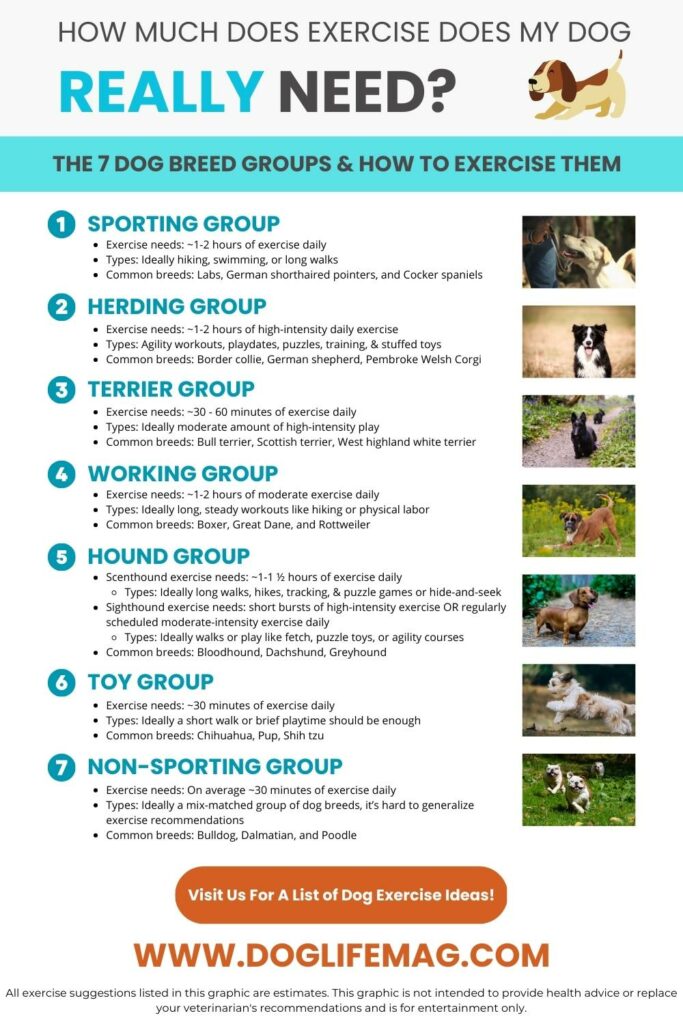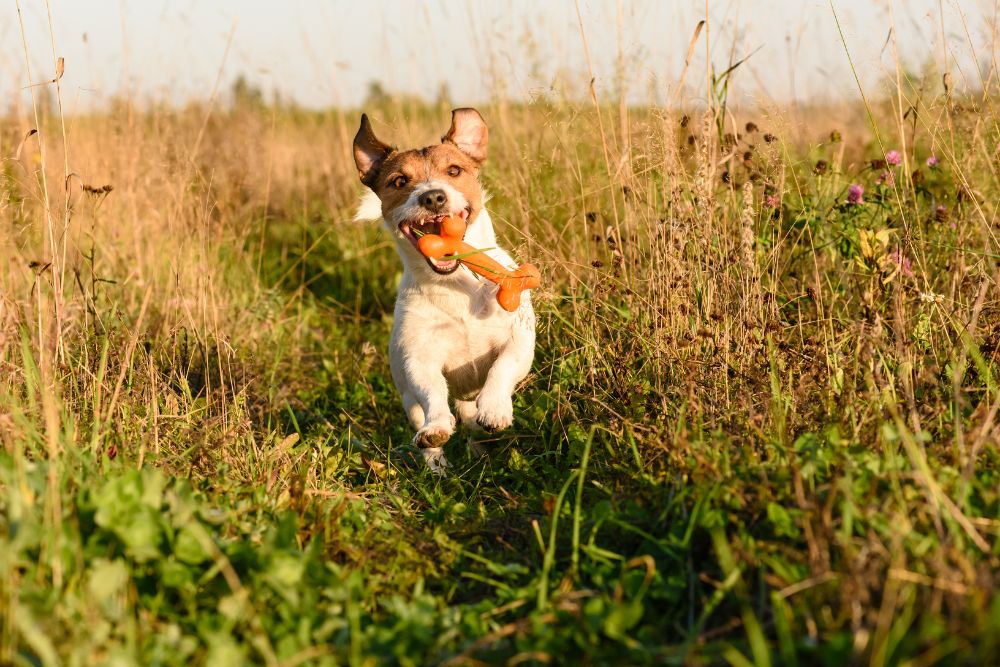All dogs need exercise. This is a pretty well-known fact. But many people don’t realize that the type of exercise a dog needs varies from dog to dog. Some have endless energy they just need to burn, while others crave both mental and physical stimulation. Then you have those who seem too lazy or tired to do anything. Should you force them to exercise or let them be?
At home, you may have two dogs with very different exercise needs. One pup might be a small 7lb Chihuahua who is perfectly content cuddling with mom and dad all day and occasionally running around in the yard to burn off a little energy.
On the other hand, your other doggo might be a 45lb Border Collie/Pitbull mix who needs constant stimulation. Some dogs are highly intelligent and full of energy. You don’t want to learn the hard way that your dog needs a consistent exercise routine that includes both physical and mental stimulation. Because if your doggo starts getting bored, it can lead to misbehavior.
It’s important to understand exercise needs of the different types of breeds to better understand what dog breed to adopt for your personality and lifestyle!
You can’t treat both of the above-mentioned pups the same way; one would go insane from boredom and become depressed, while the other dog just doesn’t have that much energy and their little body can’t take it. Every dog is different, and it’s essential to understand your dog’s specific exercise needs.
If you’re considering adopting a dog. Or, you have a dog acting out or struggling with obesity. You might wonder what kind of exercise they need and how much to stay happy and healthy.
In this article we’ll review the following about daily dog exercise needs:
- The benefits of regularly exercising your dog
- The 7 different types of dog breed groups and their exercise needs
- Dog exercise ideas for the different types of dog breeds

What are the benefits of regularly exercising your dog?
Dogs need regular exercise and mental stimulation to be in optimal health. Dogs who receive the appropriate exercise will experience the following health and social benefits.
HEALTH BENEFITS:
- Prevents obesity and related issues such as arthritis, heart disease, and diabetes.
- It leads to a stronger heart, denser bones, and lower blood pressure.
- Exercise keeps dogs limber, which supports healthy muscles and joints.
SOCIAL BENEFITS:
- Exercise helps with dog anxiety-related behavioral issues like excessive licking, barking, chewing, digging, etc.
- It helps your dog establish trust and confidence in you and your surroundings.
- It lowers your dog’s risk of depression.
The 7 Dog Breed Groups & How to Exercise Them
There are hundreds of different dog breeds with various needs and character traits. The American Kennel Club separated them into seven breed groups to help people better understand their dogs.
Sporting Group
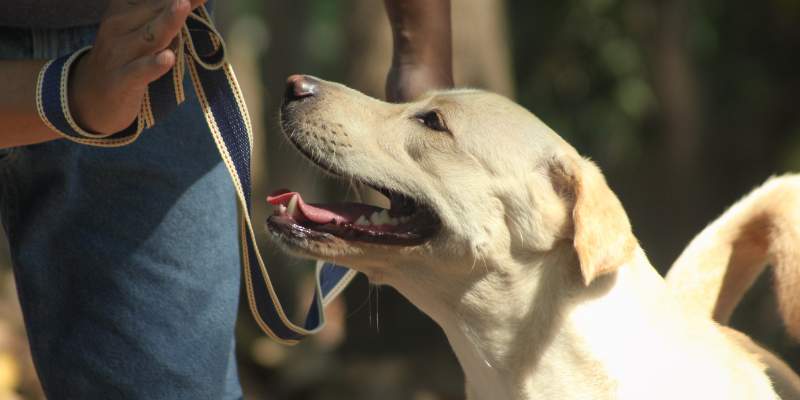
Sporting breeds are bred to assist hunters in capturing and retrieving birds. They often have thick, water-repellant coats to protect them in harsh hunting conditions. These retrievers, setters, pointers, and spaniels are energetic and love to play!
Exercise: These breeds need roughly 1-2 hours of exercise daily to burn off their energy—ideally, hiking, swimming, or long walks.
Most well-known breeds: Labrador retrievers, German shorthaired pointers, and Cocker spaniels.
Herding Group
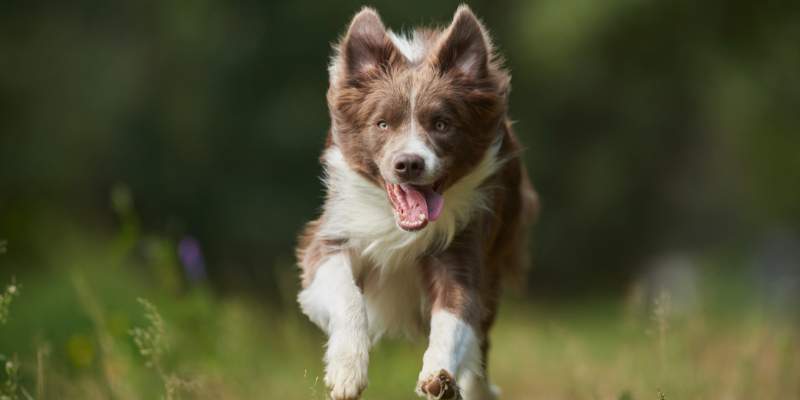
Herding breeds were developed for moving livestock like sheep, cattle, and reindeer. They work closely with their humans and have a natural intelligence and responsiveness that makes them easy to train. They need a job to be stimulated. Otherwise, they will start applying that energy and intelligence to misbehaving.
Exercise: Herding dogs need 1-2 hours of high-intensity daily exercise. These intelligent dogs need high agility workouts, playdates, puzzles, training, and stuffed toys to keep them stimulated.
Most well-known: Border collie, German shepherd, Pembroke Welsh corgi.
Terrier Group

Terrier breeds were first bred to pursue vermin, but they’ve become popular companion dogs known for their feisty and playful personalities. These little guys have no problem telling anyone, big or small; they’re the boss.
Exercise: Terriers require a moderate amount of high-intensity play. All they need is around 30 minutes to 1 hour of play daily.
Most well-known: Bull terrier, Scottish terrier, West highland white terrier.
Working Group

Working dogs were bred to handle long hours working alongside their humans. They live for the job, pulling sleds or carts, guarding flocks and homes, or protecting their families. They are known for their imposing stature, strength, and intelligence.
Exercise: They prefer long, steady workouts like hiking or physical labor. Ideally, 1-2 hours of moderate activity and mental stimulation. Try to avoid high-intensity exercise.
Most well-known: Boxer, Great Dane, and Rottweiler.
Hound Group

Hound dogs were bred to pursue warm-blooded quarry. They have strong prey drives and often stop at nothing to catch their quarries. There are two types: sighthounds and scenthounds.
Sighthounds are sleek, long-legged dogs with explosive speed and incredible expansive vision to chase fast prey. They have great stamina and loads of energy.
Scenthounds have potent noses and can trail anything they catch a scent of. They are incredible trackers.
Their exercise needs:
Scenthounds need around 1-1 ½ hours of exercise a day and enjoy long walks, hikes in any terrain, tracking, and puzzle games or hide-and-seek.
Sighthounds need short bursts of high-intensity exercise OR regularly scheduled moderate-intensity exercise. Going on walks or doing purposeful play like fetch, puzzle toys, or agility courses are excellent.
Most well-known: Bloodhound, Dachshund, Greyhound.
Toy Group
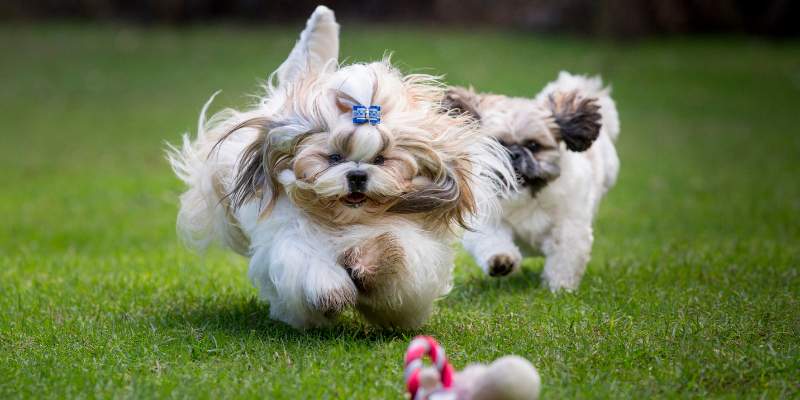
These cuties are the perfect lap dogs! Their job is to be attentive, affectionate companions. Toy breeds are popular with city dwellers because they fit into smaller dwellings and don’t need a big yard.
Exercise: These little guys crave human interaction more than exploration. A short walk or brief playtime should be enough when they have the energy.
Note: The smaller they are, the easier it is for them to get over-exercised. Don’t push them too hard.
Most well-known: Chihuahua, Pup, Shih tzu.
Non-Sporting Group

All the pups that don’t fit into the other six categories are part of the Non-Sporting Group. Most of them are companion dogs developed mainly to interact with people in some way.
Exercise: Since this is a mix-matched group of pups, it’s hard to generalize exercise recommendations. If your doggo fits into this category, you’ll want to research their needs specifically.
Most well-known: Bulldog, Dalmatian, and Poodle.
Which breeds need the most exercise?
Sporting and herding dogs need the most physical and mental stimulation.
Which breeds need the least amount of exercise?
- Flat-faced dogs like pugs and bulldogs who are prone to breathing trouble need mild activity. Be careful you don’t over-exert them.
- Senior dogs of any size need a reduced workout. Look out for signs that they might be tired or in pain.
- Small dogs like Maltese or Chihuahuas don’t need much exercise.
- Giant breeds like Great Pyrenees and Great Danes only need to stretch their legs occasionally. Their immense size makes exercising too strenuous for their joints.
Dog Exercise Ideas
1. Walking

Walking is the most popular form of exercise and the most versatile. Adjust the length, frequency, and intensity based on your schedule and your doggo’s needs.
2. Jogging
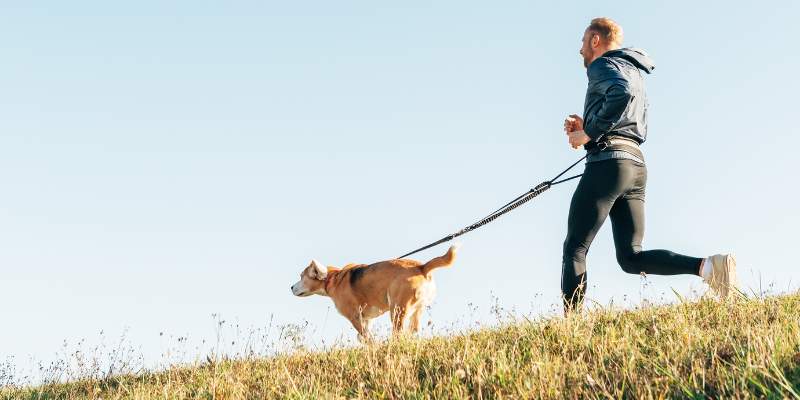
Great for sighthounds, working breeds, and sport breeds that have endurance and need to burn energy.
3. Swimming
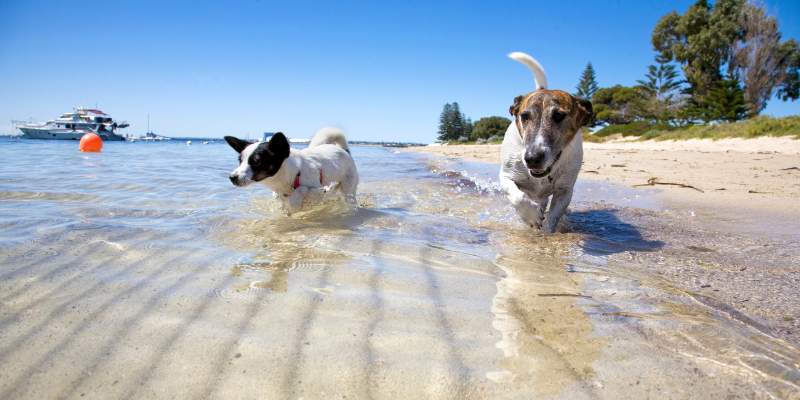
If your dog likes to swim or has terrible joints, this is a great full-body workout. Just remember, safety first, get them a dog life jacket!
4. Hiking

It is a perfect way to stimulate your dog’s curiosity while giving them a good workout. Working and herding breeds love hikes.
5. Frisbee
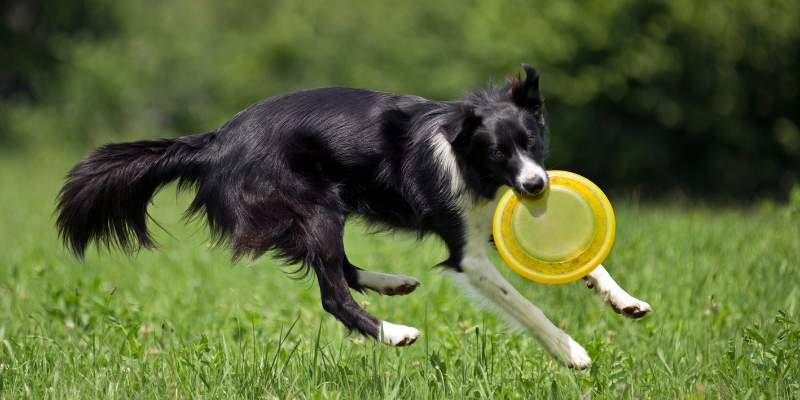
Sporting breeds love frisbee because it simulates the gathering part of a hunt.
6. Agility Training

If you have the space to set up obstacle courses, agility training is a great way to keep an intelligent dog actively stimulated.
7. Dog Park
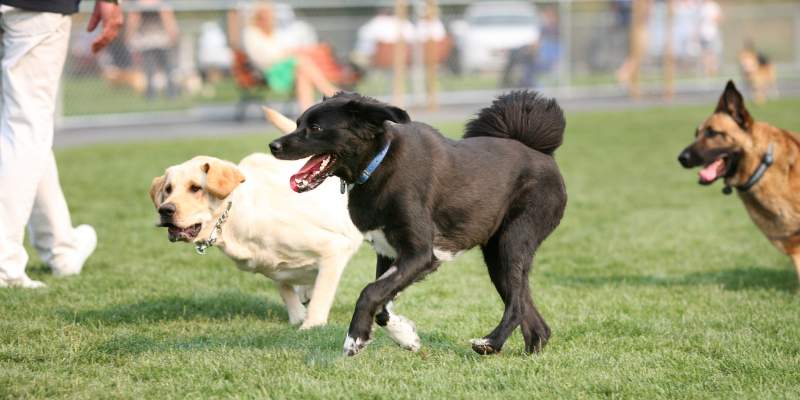
Letting your dog play off-leash with other dogs is great exercise! Just make sure you do some basic obedience training beforehand.
8. Fetch
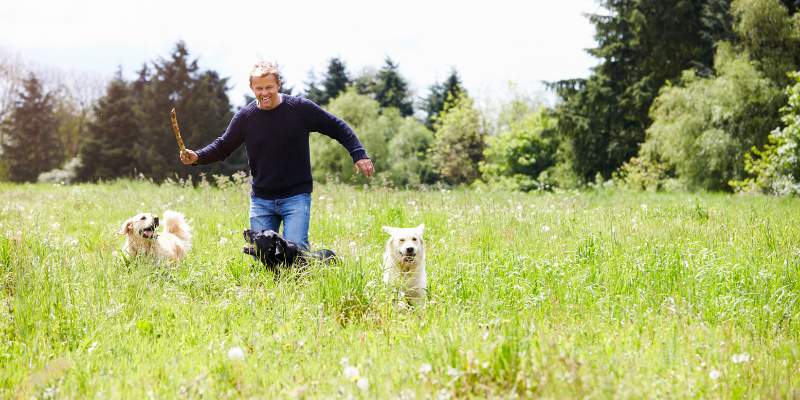
Much like frisbee, fetch simulates the gathering part of a hunt. Sporting dogs love it, but all dogs like to fetch occasionally, except for some toy breeds. It’s hard to get a chihuahua to fetch anything!
9. Working

Sometimes, they need a job! If you are working outside, let your dog join you. This is especially good for working breeds who just want to help their humans.
10. Play Time
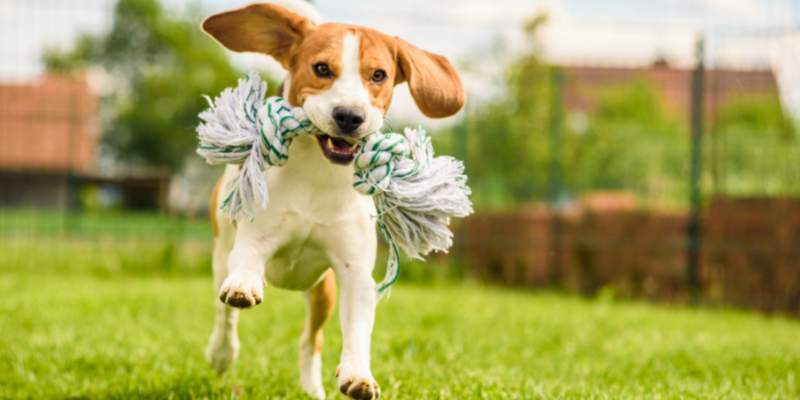
Whether with you or other dogs, letting your fur baby play is an excellent form of exercise! Especially for puppies!
In Our Experience
There is no one-size-fits-all approach to exercising your dog. Every breed has different exercise needs. Knowing what your dog’s breed typically needs is the first step towards ensuring they remain happy and healthy.
Age is also a key factor in determining how much exercise your doggo might require on the daily. Puppies can be a ball of energy and zoomies. There might even be times you ask, “When do puppies get easier?!”. While older adult dogs may be lower energy and need less daily exercise, they still need mental stimulation and low-to-moderate activity such as walks around the block or a visit to the dog park for socialization.
But don’t stress. There are always better approaches. Get some dog toys for their exercise needs. And just pay attention and follow your dog’s lead. If they look depressed, take them outside. If they keep misbehaving, then find better forms of stimulation.
Let us know how it goes, comment below!
